We're in the Arid House...
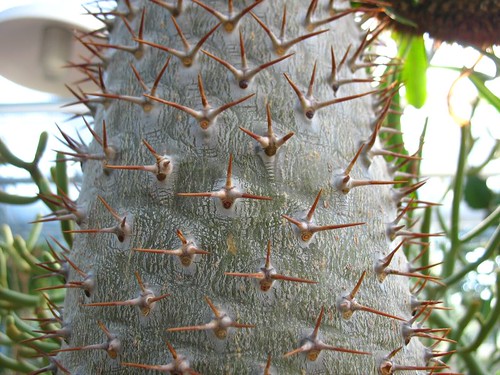
and this is Pachypodium lamerei.

And so is this.
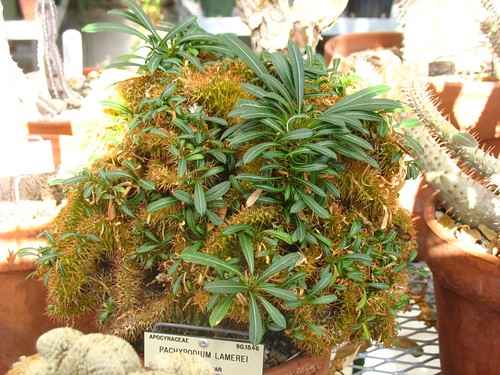
As you can see from the identification tag, Pachypodium belongs in the dogbane family, Apocynaceae, the same family that includes vinca, oleander, and star jasmine. I know all that because I'm super, super-smart. No, I just took a year of Plant ID in the horticulture department at community college, by far one of the best things I have ever done with my time.
Here's another taxonomical surprise. This is a Pelargonium.
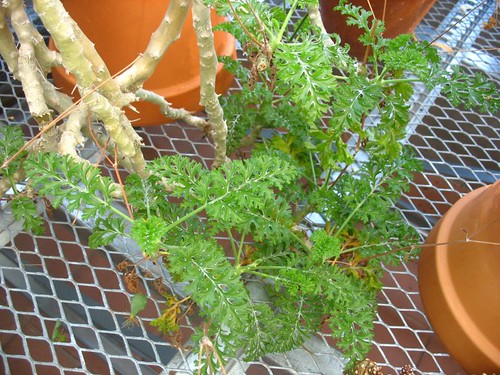
See?

That says Pelargonium carnosum.
Oh, my.
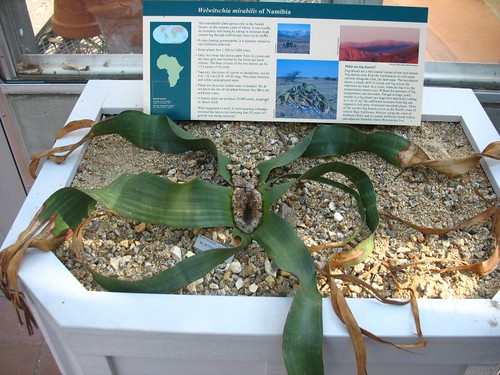
This is Welwitschia mirabilis. If you say it does not remind you of a vulva, you either need glasses or you're in denial.
This is a fast-growing vulva. I took this picture of it in September, 2006.
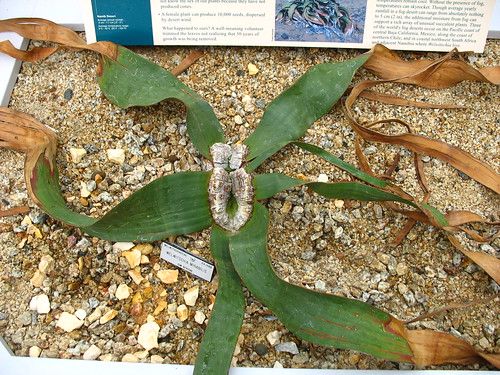
Now it's about to climb out of its planter box and start eating people.
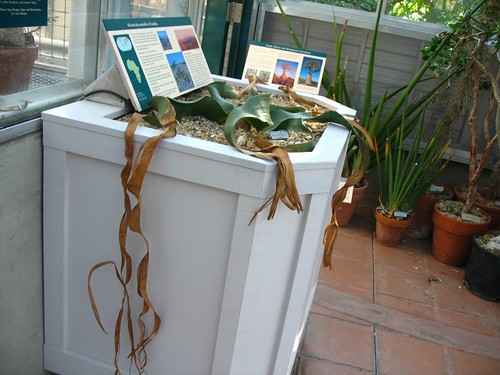
I think this would be a neat houseplant.
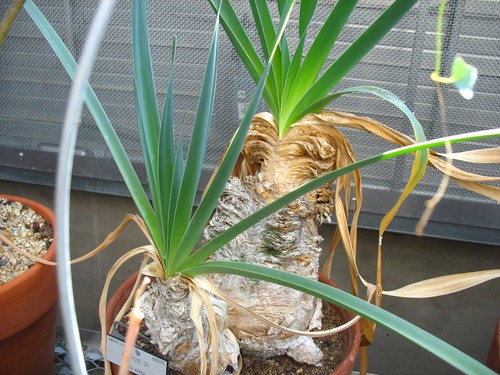
It's just called Boophone sp., from South Africa. Amaryllidaceae.
Here's another Boophone, B. haemanthoides.
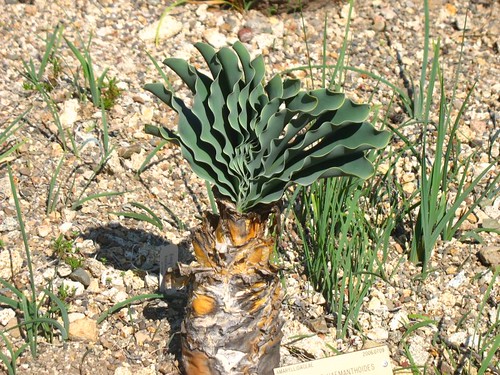
This is a rather compact-looking specimen of Aloe plicatilis. This is the plant I stumbled over in the field behind the community garden and took a cutting of several months ago. (The cutting is doing well, although I've since bought two more rooted A. plicatilis. So now I have three.)
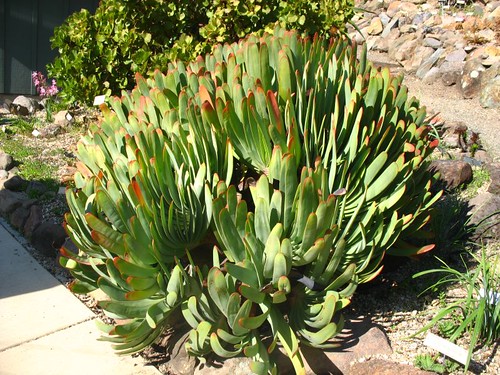
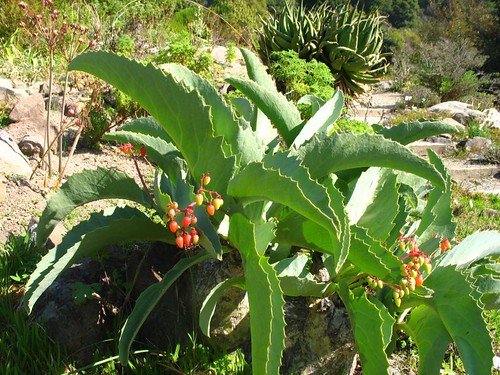
I'm trying to think of other succulents with attractive fruit. I can't really think of any. Opuntia maybe.
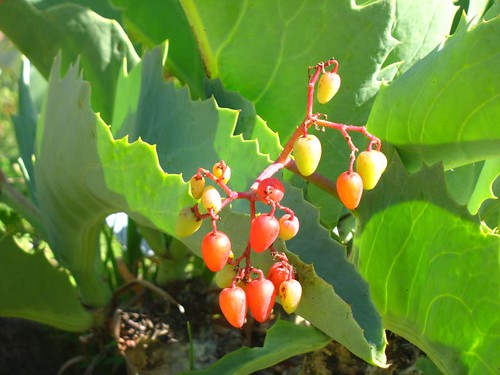

On that note, we're done with the desert, and entering the woods.
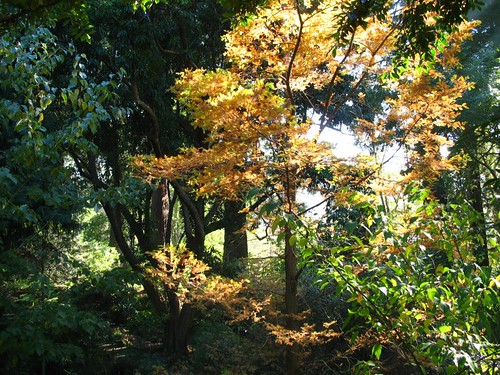
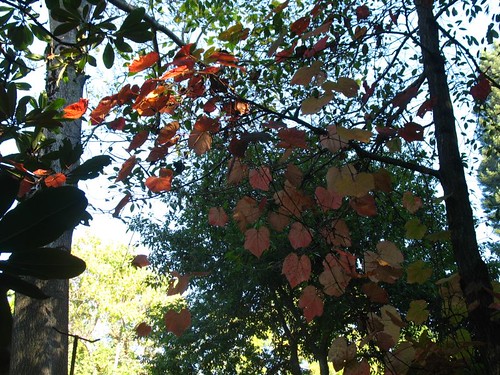
The Vitaceae is an interesting family without clear connection to any other family. This is Vitis coignetiae and these leaves are as big as dinner plates. You might know this plant as Crimson Glory Vine. Digging Dog sells this plant.
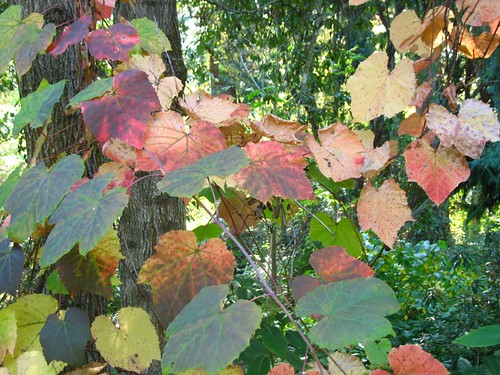
Less densely foliated this time of year, these leaves seem to hang in the air.
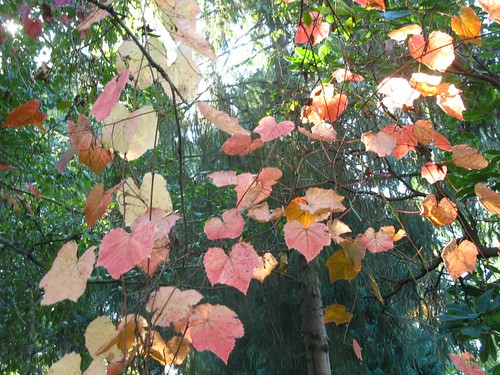
Hydrangea shrubs. Always nice to see in other people's gardens.
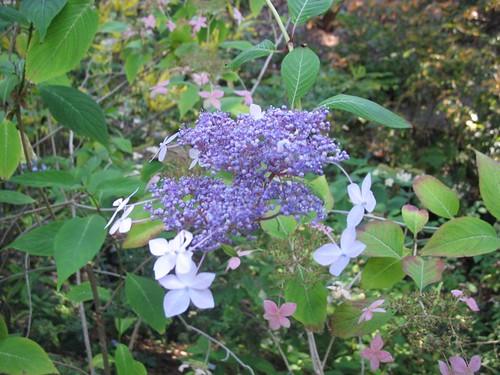

Some kind of water iris. I actually think I own this plant, but I don't have it in a pond, so it will never flower and I should probably get rid of it.
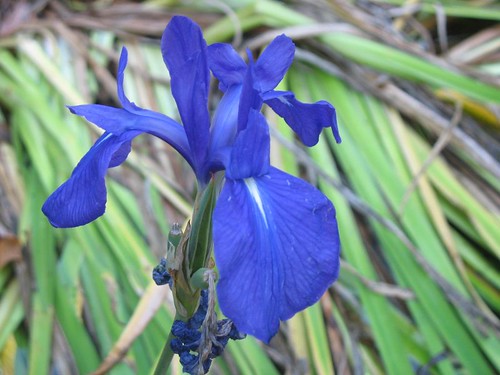
The County Clerk started a Flickr Group, Berberine Daydreams, and I added this picture of Mahonia lomariifolia.
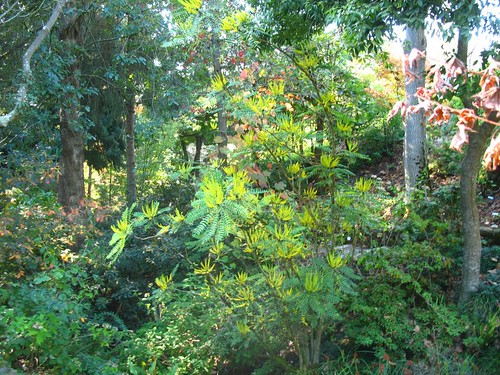
The genus Mahonia is in the Berberidaceae, and some think it should be consolidated with the genus Berberis. Whatever.
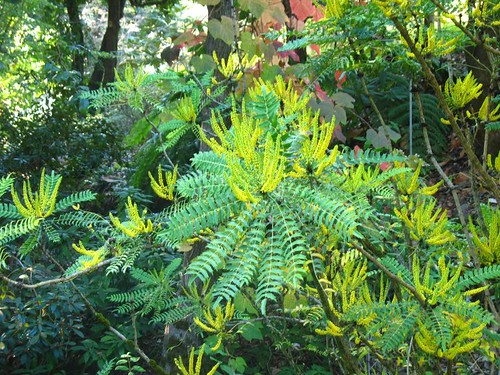
I didn't realize Berkeley Bot had so many of these Mexican salvia things. I thought Strybing had cornered the market.
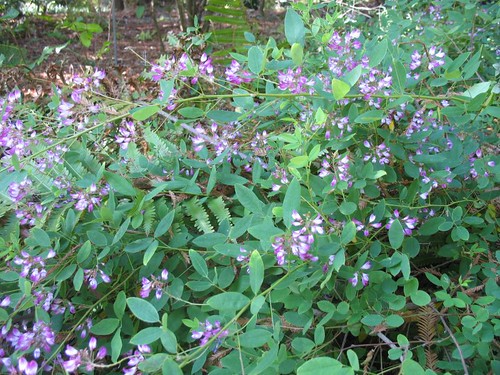
They have pretty flowers, but need a lot of development before they're ready for any ordinary home garden. They're huge, rampant things.
I only took pictures of a couple others.
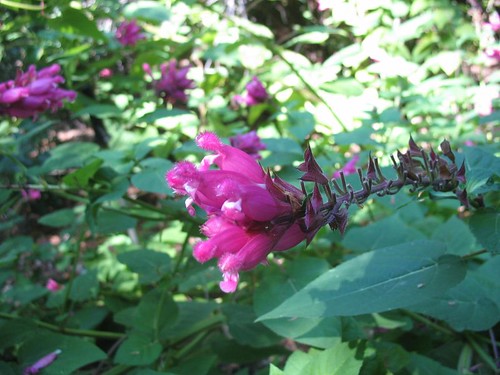
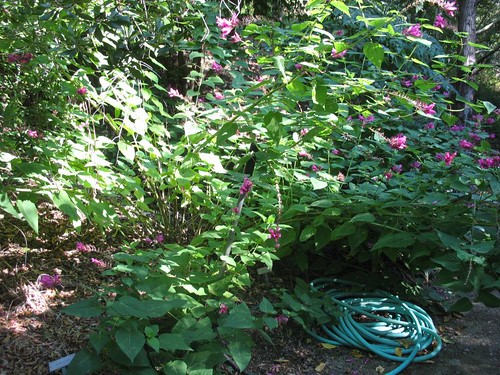
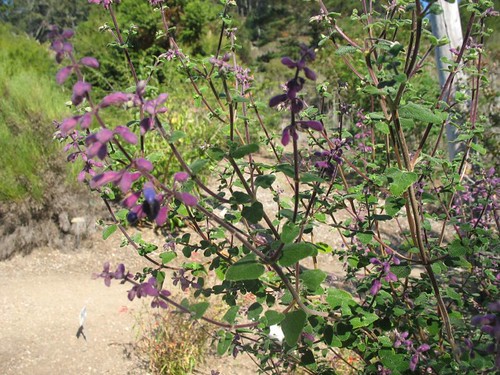
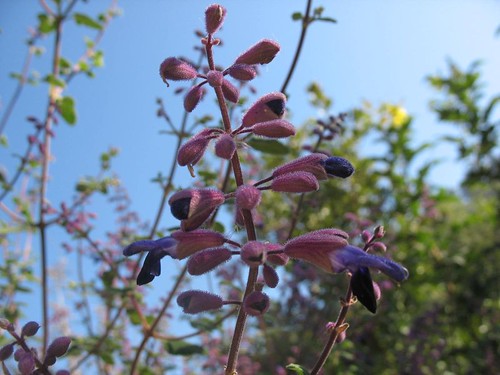
This one's pretty.
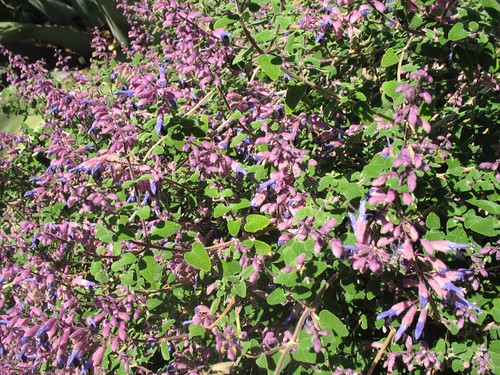
Now for some abrupt shifts...
Casurina torulosa.
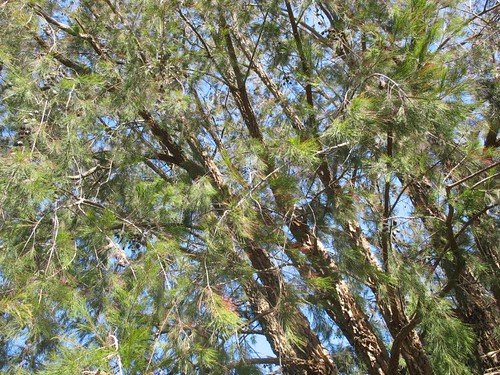
Beautiful needles.
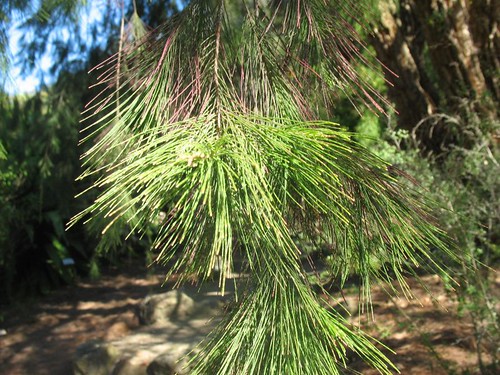
Beautiful bark.
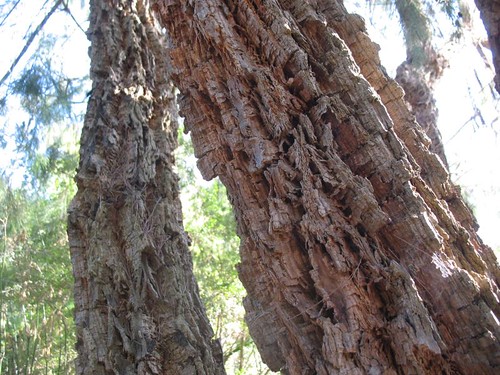
This is Chayote squash, Sechium edule.
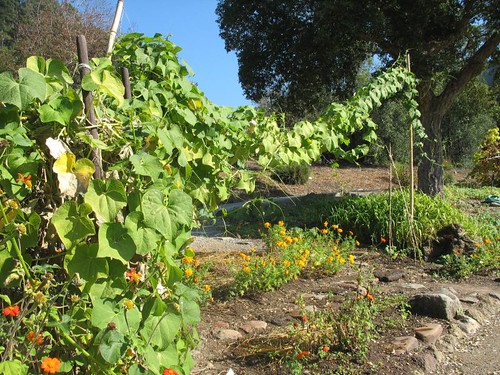
It's an elephant topiary. No, not really. It just looks that way.
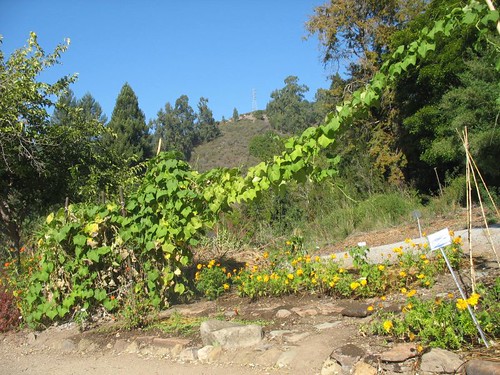
Pam Peirce endorses chayote, even in small gardens because it's attractive and climbs. This is a cool season squash that ripens in November and December. In her book Golden Gate Gardening, she writes, "This tropical plant grows from seeds that never become dormant, but just grow out of the mature fruit a few months after it falls to the ground. To start plants, get two or three chayote fruits from another gardener in December or January or buy some at a produce market." I'm pretty sure you can get seeds from Territorial too.
Passion fruit vine, quite dead
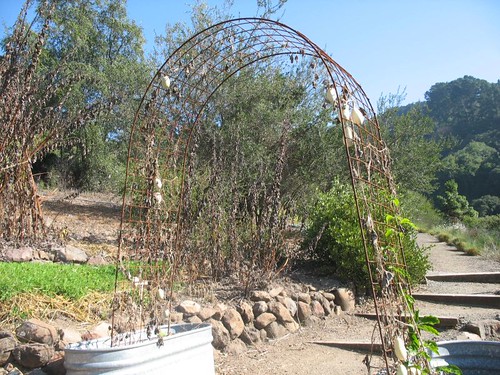
and passion fruit.
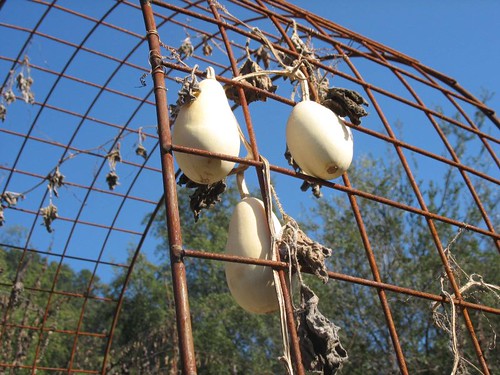
I like how this combination looks from either side.

But especially this side.
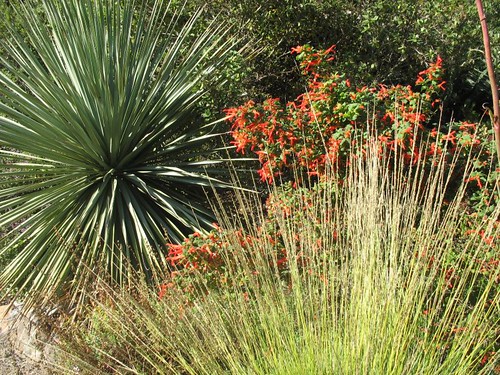
The grass and that...other thing are cool in near proximity.
Lusciousness.
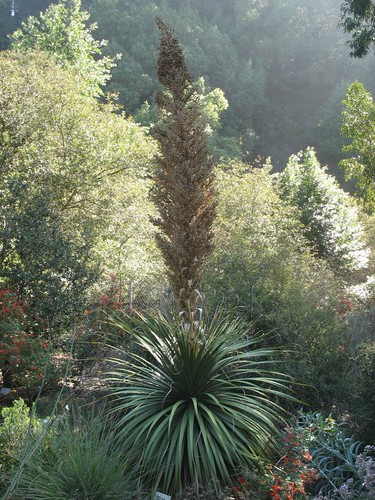
More blooming tree dahlias.
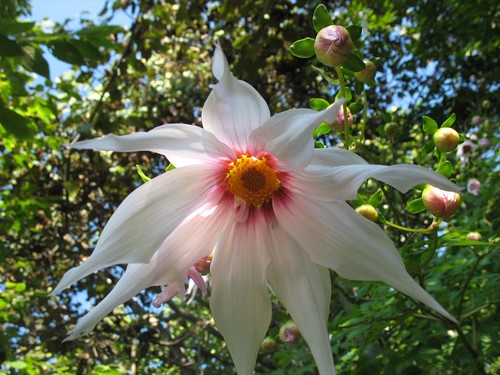
I couldn't decide which picture to use.

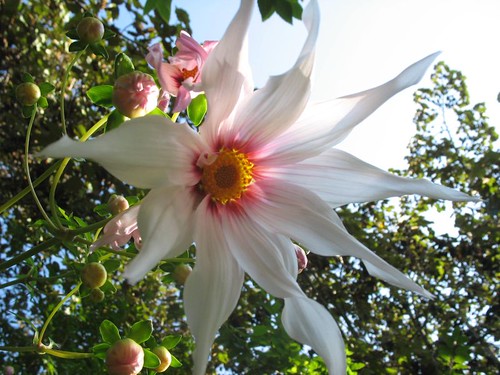
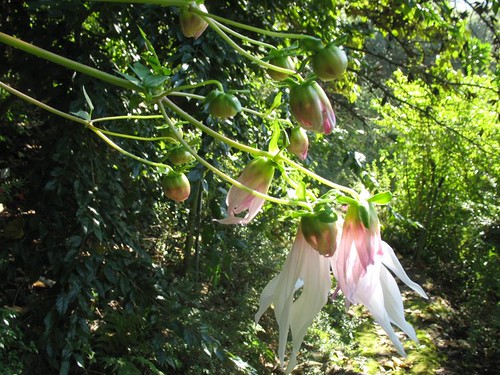
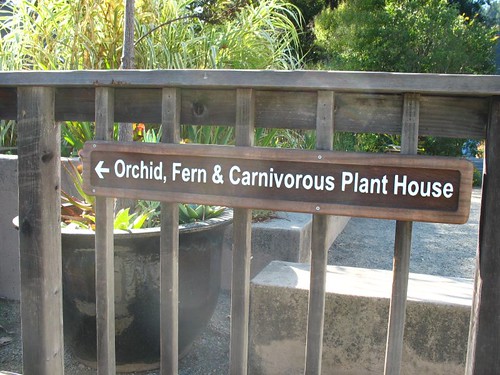
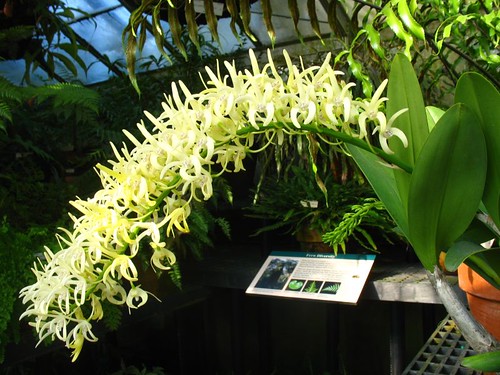
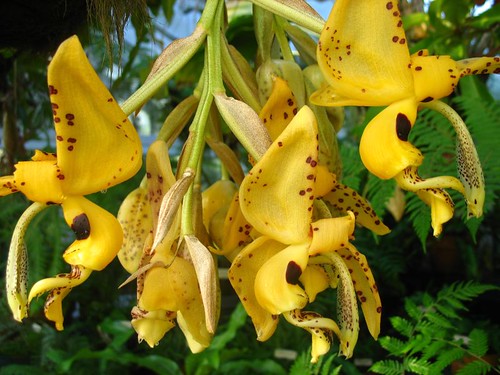

These pitchers are from the genus Nepenthes. There's an especially scary one from Borneo called N. hamata, that has "the mouth of the pitcher surrounded by long, curved, knife-sharp hooks. 'One can only guess what this plant may be evolving into,' D'Amato writes in his classic, The Savage Garden. 'Pray that it doesn't start walking.'" (Link.)
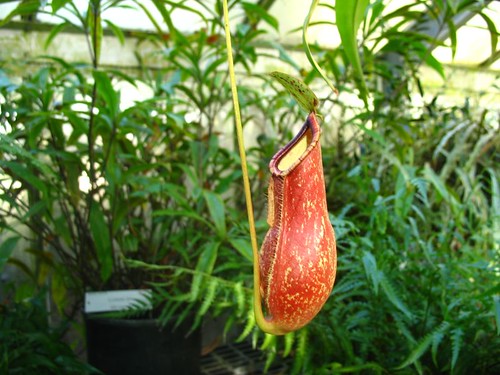
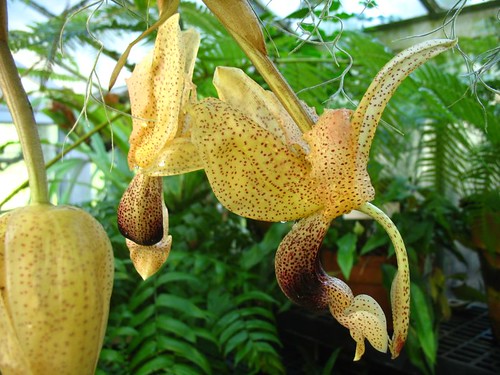
Cattleya labiata var. El Dorado
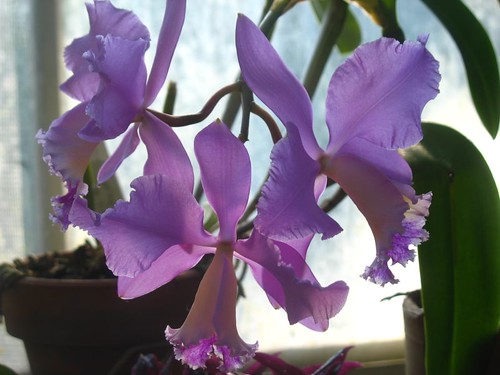
And we end this visit in California, where recent rains have rejuvinated Coreopsis gigantea.
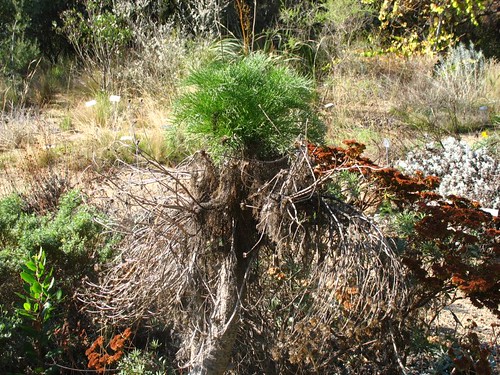
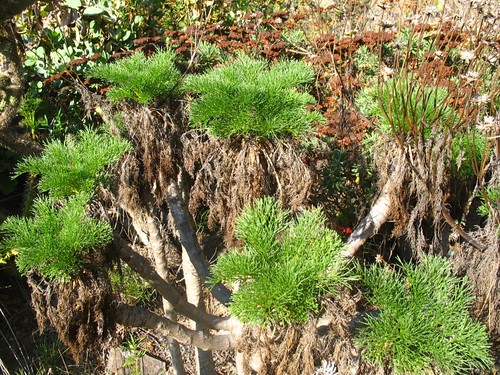
November, California's second spring.

9 comments:
What amazing pictures of incredible plants - but sweetheart, whose vulva have you been looking at? Mine isn't anywhere near as corroded as that Welwitschia...
but it has been known to crawl out of its box on occasion.
Okay, but it's vulva-esque.
Excuse me, I have an incoming call on my Boophone....! I wish that casurina was more cold hardy, that bark is the shit! I like those tree dahlias, and the n. hamata...I want one in the house. I have some ladybugs that I need to disappear, and that looks like the right asassin for the job! Thanks for the tour!
Lisa just can't resist the Boophone joke!
BTW, the Welwitschia is truly a miraculous plant. Among other things, it's a gymnosperm.
Oh, check out these pics of (mostly) succulent pelargoniums. It's a huge genus.
I miss the kittens. Hope to see them soon!
Is the thing with red flowers near the dead passionflower vine a Zauschneria?
Awesome Pelarognia.
Kittens soon.
Not Zauschneria; those tend to stay close to the ground. I'm not sure what that is... Keckiella? Galvezia? I didn't look. It was in the Mexico section. I'll be back there again in a couple of weeks, and get an ID.
It's spelled 'Boophane'. I own many B. heamanthoides, and B. disticha. Beautiful plants. I also own a Welwitschia mirabilis I purchased from The Huntington' just a few years ago. It's growing quite nicely in my window sill. They require more water than you might think.
Post a Comment